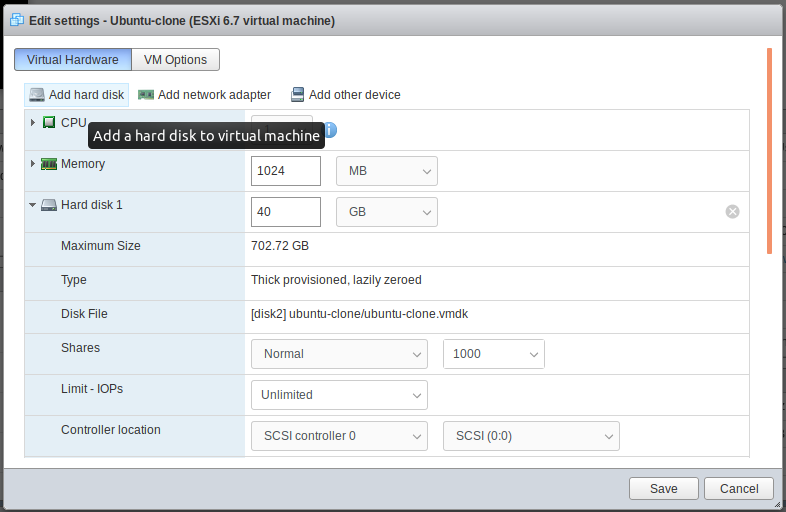
To create a new VM after the New VM window opens, select Create a new VM and click on the Next button. In the Virtual Machines window, click the Create / Register VM button. To create a VM, click VMs from the options in the left pane. The first boot view of vSphere ESXi is as follows.
#Clone virtual machine vmware esxi 6.7 password
On the login screen, type your username and password as shown below and click on the Log in button. So, as you can see, with this technology you can easily provision dozens or even hundreds of new VMs without using almost no resources on your ESXi server.Run the server and connect to the server by typing the IP address in the Internet Explorer address line. Again, this is just sample, really basic script but it can be much complex based on your desired use-case.Īlso, don’t forget to check Will’s blog post regarding some best-practices regarding host customization and some recommendations regarding Insta Clones IP_ADDRESS=$(vmware-rpctool "info-get guestinfo.ic.ipaddress")Ĭat > /etc/sysconfig/network-scripts/ifcfg-eth0 20)Īnd that’s it. HOSTNAME=$(vmware-rpctool "info-get guestinfo.ic.hostname") # retrieve VM customization info passed from vSphere API Let’s have a look at the example of my hostcustomization.sh script #!/bin/bashĮcho "Disabling $ interface.
#Clone virtual machine vmware esxi 6.7 download
If you want to download the scripts you can check my GitHub repository

In the past, the idea of VMfork was about creating virtual desktops on-the-fly from the master VM but there is much more you can do with Insta Clone. Please not, that you do not need to enable transparent memory sharing on the ESXi hosts, everything works internally out-of-the-box. What is the beauty about that? Basically, you use the resources really wisely meaning that you can Insta Clone dozens of VMs but the footprint in the pRAM of the ESXi host will be kept at minimum. And now add memory as well!īasically, all the new Insta Clone VMs shared based disk and base memory of the parent VM and only the changes are written to the datastore (in case of disk) or actually written into pRAM of the ESXi host.


How it works internally? Well, it is similar to snapshot technology when the new changes are written to delta disk, so all the VMs have the similar base disk at the beginning of their lifecycle, but individual changes in those VMs are not affecting each other. So, what it is? Imagine a situation when you need to (almost) instantly create dozens or even hundred VMs from parent (or source) VM but with possibility to customize new VMs. Well, it’s not exactly new feature, some of you might heard about something called VMfork but since vSphere 6.7 its fully integrated into the vSphere itself. One of the new features in vSphere 6.7 is Instant Clone.


 0 kommentar(er)
0 kommentar(er)
